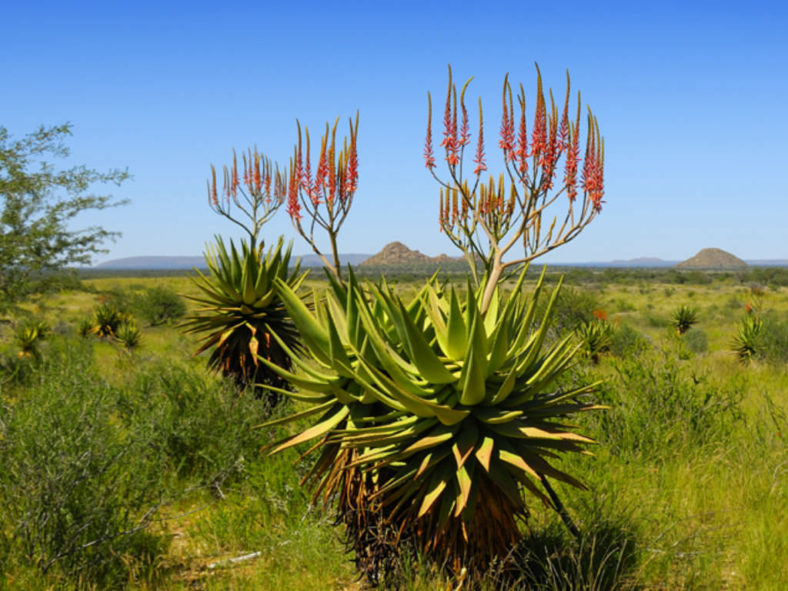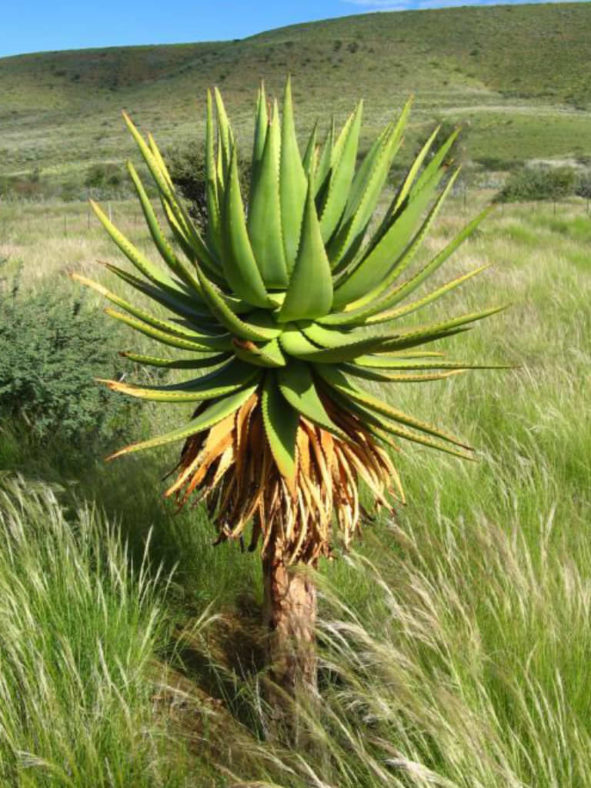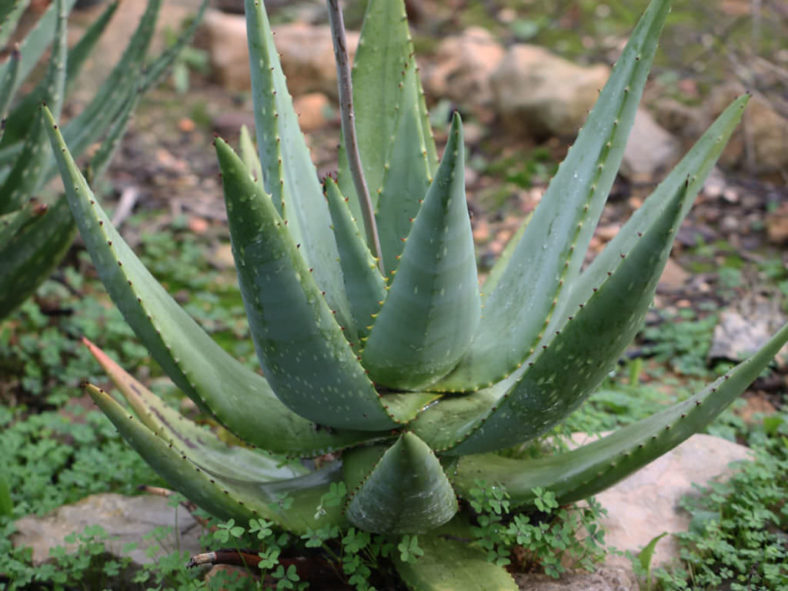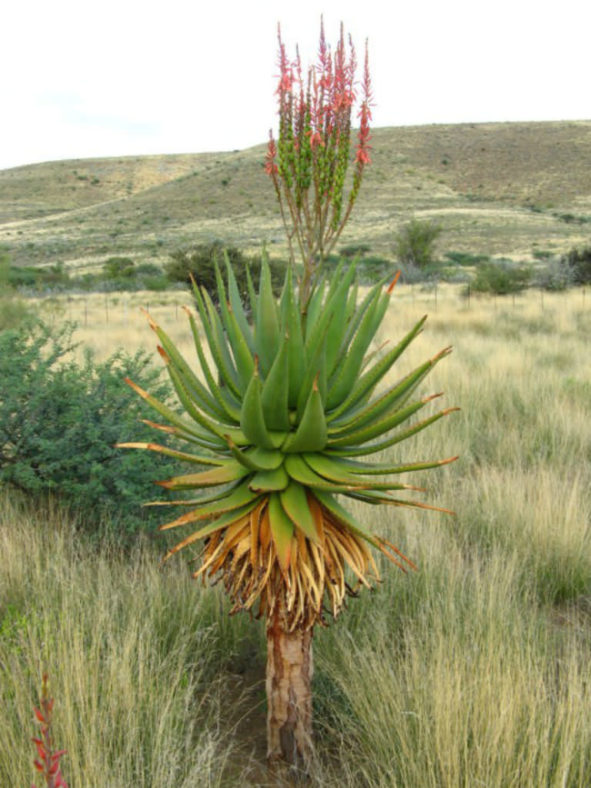Scientific Name
Aloe littoralis Baker
Common Name(s)
Aloe of the Shore, Luanda Tree Aloe, Mopane Aloe, Mountain Aloe, Sea-side Aloe, Windhoek Aloe
Synonym(s)
Aloe angolensis, Aloe rubrolutea, Aloe schinzii
Scientific Classification
Family: Asphodelaceae
Subfamily: Asphodeloideae
Genus: Aloe
Etymology
The specific epithet "littoralis (lit-tor-AY-liss)" means "of the seashore; littoral" and refers to the location where the species was first found in Angola.
Origin
This species is native to the arid regions in Angola, Botswana, Mozambique, Namibia, South Africa, and Zimbabwe.
Description
Aloe littoralis is a succulent plant that forms a rosette at the top of an upright, usually unbranched stem densely bearded with old dry leaves. It can grow up to 13.3 feet (4 m) tall. The leaves are grey-green to yellowish-green, sometimes tinged red, and have reddish-brown teeth along the margins. They are lance-shaped, measuring up to 26 inches (65 cm) long and 5.2 inches (13 cm) wide. On young plants, the leaves sometimes have white spots.
The flowers are dull rose-red to bright red, yellowish at the mouth, and appear in a branched inflorescence that rises up to 4 feet (1.2 m) above the rosette from late fall to early winter.

How to Grow and Care for Aloe littoralis
Light: When growing Aloes indoors, place your plants in a southern or southwest-facing window with plenty of bright, indirect light. Outdoors provide light shade, especially during the hottest parts of the day.
Soil: Plant Aloes in well-drained soil specially formulated for cacti and other succulents, or make your soil mix. Drainage is essential because too much moisture around roots can cause root rot.
Hardiness: Aloe littoralis can withstand temperatures as low as 25 to 50 °F (-3.9 to 10 °C), USDA hardiness zones 9b to 11b.
Watering: These succulents need regular watering but are very tolerant of drought conditions for short periods. Water deeply, but only when the soil is dry. Cut back on watering during the winter months.
Fertilizing: Aloes generally do not require fertilizer but may benefit from the extra nutrients.
Repotting: These plants are not particularly fast-growing and will only rarely need repotting. Repot them in the spring in a container a few inches larger in diameter every few years to keep them from becoming rootbound.
Propagation: Propagating Aloe can be done by offsets, cuttings, or seeds from a mature plant.
Learn more at How to Grow and Care for Aloe.
Toxicity of Aloe littoralis
Aloe littoralis is not listed as toxic for people and pets. The flowers and leaves are edible and sometimes harvested from the wild as local food or for medicinal uses.
Links
- Back to genus Aloe
- Succupedia: Browse succulents by Scientific Name, Common Name, Genus, Family, USDA Hardiness Zone, Origin, or cacti by Genus
Photo Gallery
Click on a photo to see a larger version.


